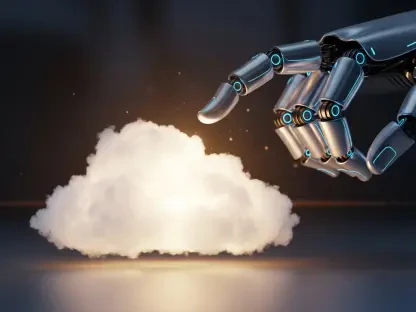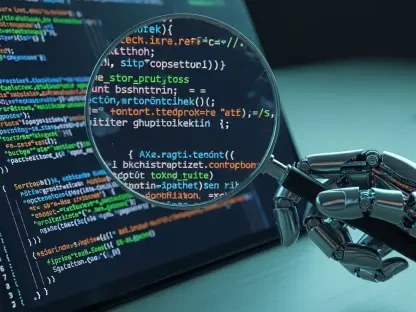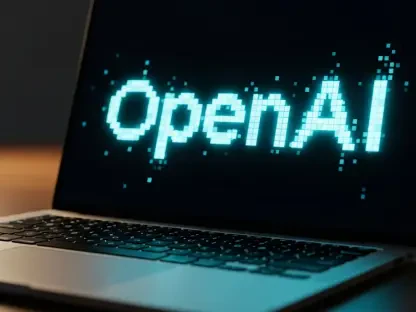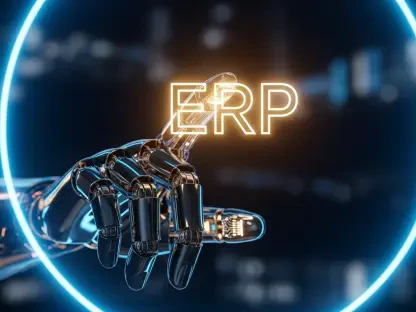What happens when a titan of artificial intelligence joins forces with a master of rapid product development in a market racing toward unprecedented growth? OpenAI, a frontrunner in generative AI, has acquired Statsig, a Washington-based platform known for turbocharging product iteration, in a staggering $1.1 billion deal. Announced in 2025, this move is not just a financial transaction but a bold statement of intent. It signals OpenAI’s determination to outpace competitors in a field where every update, every feature, and every second can redefine market leadership. This story unfolds at the intersection of technology and strategy, promising to reshape how AI evolves.
The significance of this acquisition cannot be overstated. As the AI assistant market is projected to surge from $3.35 billion in 2025 to $21.11 billion by 2030, according to MarketsAndMarkets.com and Statista, companies like OpenAI face relentless pressure to innovate faster than ever. Statsig’s tools, designed for real-time experimentation and feature flagging, offer a potential game-changer, enabling OpenAI to refine flagship products like ChatGPT and Codex with unparalleled speed. This deal positions OpenAI to not only maintain its edge but also set a new benchmark for how quickly AI solutions can adapt to user needs in an increasingly crowded arena.
A Strategic Power Play in the AI Arena
The AI industry in 2025 is a battleground, with giants like Google, AWS, and Anthropic rolling out formidable tools such as Gemini, Amazon Q, and Claude to challenge OpenAI’s dominance. Speed has become the ultimate currency, as delays in product updates can mean losing ground to rivals who are equally hungry for market share. OpenAI’s decision to acquire Statsig is a calculated maneuver, aimed at addressing this very challenge by integrating a platform that specializes in accelerating development cycles.
This acquisition stands out as more than just a business move; it reflects a deeper understanding of the stakes involved. With the AI development tool software market expected to grow from $9.76 billion in 2025 to $12.99 billion by 2030, per industry reports, the urgency to streamline innovation is palpable. Statsig’s expertise promises to help OpenAI stay ahead by ensuring that new features and improvements are tested and deployed with precision, minimizing risks and maximizing impact.
The Statsig Edge: Speed Meets Precision
At the core of this deal lies Statsig’s unique capability to transform how OpenAI approaches product development. The platform’s real-time experimentation tools allow for rapid testing of features, meaning updates to ChatGPT or Codex can be rolled out faster without compromising quality. This is a critical advantage in an environment where user expectations evolve almost as quickly as the technology itself.
Moreover, Statsig’s data-driven methodology sets it apart from less structured approaches often seen among competitors. By grounding product iterations in measurable outcomes, OpenAI can ensure that every tweak or enhancement resonates with users, whether it’s a new GPT-5 integration for ChatGPT or an IDE extension for Codex. This focus on evidence over intuition could redefine how AI tools are refined, making them more responsive to real-world demands.
The practical impact is already evident in OpenAI’s recent product upgrades, such as cloud-to-local task management for Codex and updated command line interfaces. With Statsig’s tools in play, such rollouts are likely to become even more frequent and seamless, keeping users engaged and competitors on their toes. This synergy hints at a future where AI innovation isn’t just groundbreaking but also astonishingly swift.
Voices from the Industry: What Experts Say
Industry analysts are quick to highlight the potential ripple effects of this acquisition. Forrester VP and Principal Analyst Charlie Dai remarked, “Statsig’s ability to slash time-to-market for new features could position OpenAI as the pacesetter in a market where agility often trumps everything else.” This insight underscores a broader truth: in AI, the race is not always to the strongest but to the fastest.
Leadership changes further fuel optimism about the deal’s success. Statsig CEO Vijaye Raji, now stepping into the role of CTO of Applications at OpenAI under former Instacart CEO Fidji Simo, brings a proven track record in scaling consumer tech from his time at Meta. His oversight of product engineering for ChatGPT and Codex, including core systems and infrastructure, suggests a seamless blend of technical and strategic expertise poised to drive results.
This expert consensus paints a clear picture: the acquisition is not a gamble but a meticulously planned step. By combining Statsig’s operational strengths with OpenAI’s visionary AI capabilities, the company appears ready to tackle the challenges of a hyper-competitive landscape with renewed vigor.
Behind the Scenes: Integration and Impact
Operationally, OpenAI is taking a deliberate approach to merging with Statsig. While Statsig’s team transitions to in-house roles, they will continue operating from Seattle, ensuring continuity for existing customers. This measured integration reflects a commitment to preserving Statsig’s current commitments while aligning its resources with OpenAI’s broader goals.
The focus on leadership alignment also plays a crucial role. With Raji reporting to Simo, who in turn answers to OpenAI CEO Sam Altman, there’s a clear chain of command designed to streamline decision-making. This structure aims to fuse Statsig’s technical prowess with OpenAI’s innovative spirit, potentially creating a powerhouse for AI product development.
Beyond internal dynamics, the acquisition sends a signal to the industry about the importance of rapid iteration. As competitors watch closely, OpenAI’s ability to execute on this integration could influence how other firms approach partnerships and acquisitions, possibly sparking a wave of similar moves aimed at bolstering speed and efficiency in AI advancements.
Lessons for Innovators: Applying Statsig’s Principles
Even outside the realm of AI, the principles behind Statsig’s technology offer valuable insights for businesses and developers striving to innovate. Adopting real-time testing, akin to Statsig’s feature flagging, can help any organization gauge user reactions before a full-scale launch, reducing the risk of costly missteps. This approach mirrors how OpenAI plans to refine its offerings with minimal disruption.
Equally important is the emphasis on data over guesswork. Prioritizing metrics to guide product adjustments ensures that changes are rooted in actual user behavior, a tactic that can be applied across industries to enhance relevance and engagement. This data-centric mindset is a cornerstone of Statsig’s platform and a key reason for OpenAI’s interest.
Finally, streamlining iteration cycles is a universal takeaway. Setting tight timelines for testing and deployment, much like OpenAI’s anticipated strategy for ChatGPT enhancements, can prevent delays and maintain momentum. These strategies, inspired by the acquisition, provide a roadmap for any team looking to innovate with the same urgency that defines today’s AI leaders.
Reflecting on a Bold Move
Looking back, OpenAI’s $1.1 billion acquisition of Statsig marked a pivotal moment in the AI landscape of 2025. It represented a daring bid to harness speed as a competitive weapon, leveraging Statsig’s tools to accelerate the evolution of tools like ChatGPT and Codex. The integration of technical expertise and strategic leadership under figures like Vijaye Raji and Fidji Simo underscored a commitment to execution that resonated across the industry.
As the dust settled, the broader implications became clear. This deal challenged other players to rethink their own approaches to innovation, highlighting the necessity of agility in a market projected to grow exponentially. For businesses and developers watching from the sidelines, the next steps involved adopting similar principles of rapid, data-driven development to stay relevant.
Moving forward, the focus shifted to observing how OpenAI would capitalize on this newfound capability. Would this acquisition inspire a new wave of AI breakthroughs? Only time would reveal the full impact, but one thing remained certain: the pursuit of faster, smarter innovation had taken a significant leap, urging all stakeholders to adapt or risk being left behind.









